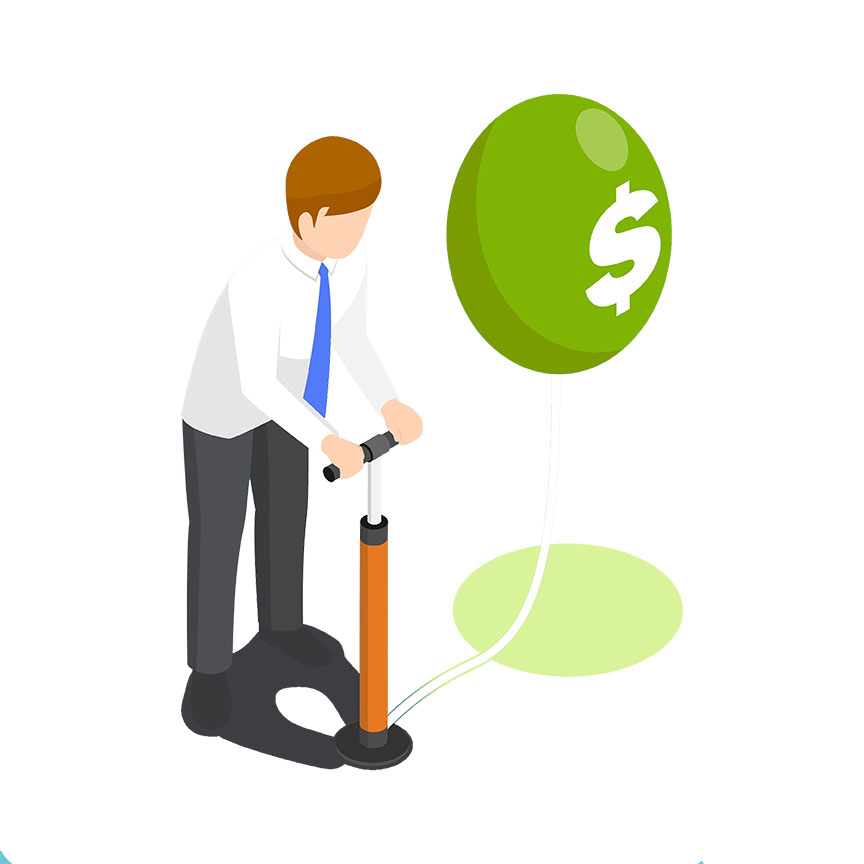Money Has Time Value Inflation and investment

In the good old days, we used to buy petrol at Rs. 35 per litre and sugar at around Rs. 30 for one kg. I still remember how excited I was when I received my first salary around Rs. 3,000 per month. The salary was enough for me for my personal expenses and some savings. But those are good old days. The same petrol now cost us Rs.110 per litre and you need to pay Rs. 70 for one kg of sugar. The same 12-piece momo that we used to eat in a restaurant is now reduced to 10 pieces in most of the restaurants with much higher price. Remember, the quantity may be the same (less in some cases), but we are now paying much higher price than before for the same quantity of goods. The story is the same for all the commodities including your investment.
The same principal applies to your bank deposit as well. For example, if you deposited Rs. 100,000 in a fixed deposit five years ago at the rate of 6%, and you received Rs. 160,000 at the maturity (ignoring tax) your actual value today will be around Rs. 120,000 only, in real term, after you adjust for inflation. But how do you know that you have lost around Rs. 40,000 in real term? The answer is simple. Go for shopping or vacation, check the prices of commodities or hotel rooms and services; you will see that for the same goods and services that you used to buy at around Rs. 120,000 five years ago, now you have to pay Rs. 160,000. Please note that the 6% interest rate in the example above is below than the inflation rate. Therefore if we assume that the inflation is 10%, then the actual value of your amount will be around the principal amount itself (i.e. Rs. 100,000). Therefore, after keeping Rs. 100,000 in fixed deposit for years, you have simply maintained your purchasing power. Interestingly we have ignored the tax in the example. If you apply tax in the interest income, then your return will be far less in the real term.
The moral of the story is that the value erodes with a time due to the inflation. In a simple term, inflation is a sustained increase in the general price level of goods and services in an economy over a period of time. Since the general price level of goods and services increases, the purchasing power of your money decreases if your return is less than the inflation. As a result, you will end up paying high price for the same good and services as explained above.
When you become an investor, you’ll be using your money to acquire things that offer the potential for profitable returns in future. For example, bank interest from savings or dividend paying stocks, coupon paying bonds, cash flow from businesses or real estate or appreciation of value from a stock portfolio, real estate, or other assets. The profitable return that you expect to earn in future will be at risk if you do not plan it properly. Therefore, you need to understand the concept of capital appreciation and capital preservation while planning for investment. In capital preservation, you expect to earn the return which is near or equal to inflation rate. In this case, you preserve the purchasing power of the money that you will receive later from your investment. Meaning that, you can use the money to buy the same goods and services that you used to buy previously from your return. But if you focus on capital appreciation, than you expect to earn higher than inflation rate. It occurs when the security that you invested commands a higher price in the market than what an investor originally paid. For example, if the general inflation rate is around 10% in the last five years and is expected to be around 10 to 12% in the coming three to five years, you would like to get a return higher than 12% (let’s say around 15%). In this scenario, you will get return which will be around 3% to 4% higher than the inflation. As a result, you will preserve the purchasing power of your money, and your return is growing in real term.
Investments targeted for capital appreciation tend to have more risk than assets chosen for capital preservation or income generation. Examples of securities that may be suitable for capital preservation are government bonds, high rated bonds issued by banks and listed companies, gold, fixed deposits and some schemes of mutual fund. However, if you are looking for capital appreciation of your investment then you need to take slightly higher risk than those who are looking for capital preservation. For example stocks, real estate and growth schemes of mutual fund etc. However, you need to evaluate your own personal circumstance (i.e. age, income sources, net worth, risk tolerance level etc) before you decides to invest for capital appreciation or capital preservation.


